
Blooming Beauties: Top 10 Flowering Trees to Light Up Your Landscape
Published: 27/03/2024 | Updated: 18/05/2024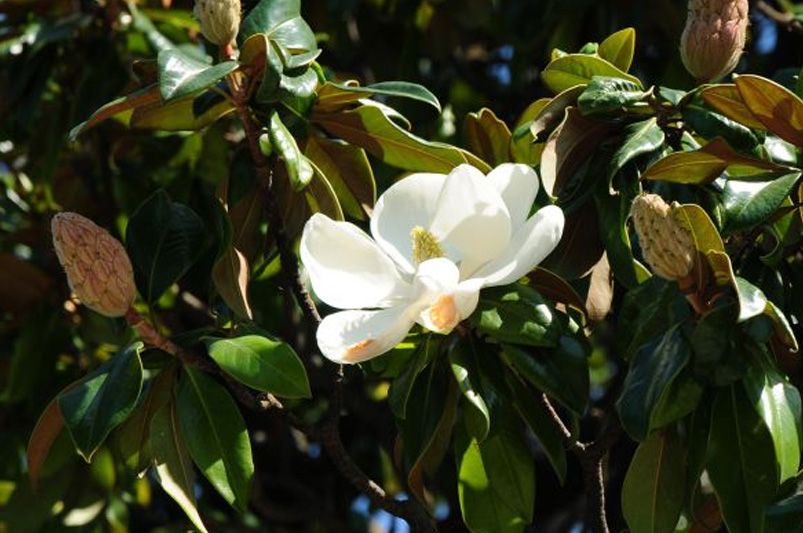
Flowering trees add a special kind of beauty and interest to any landscape. When they burst into bloom in spring or summer, flowering trees become stunning focal points that light up your yard or garden. Beyond their visual appeal, flowering trees provide multiple benefits for landscape design. In this article, we will spotlight 10 of the very best flowering trees that Shrubhub recommends to enliven your outdoor space with vibrant, on-trend garden design.


1. Magnolia Spring Flowering Trees
Magnolia trees are one of the most beloved flowering trees. Known for their large, fragrant blooms that appear in spring before their leaves, they make a stunning focal point in any landscape. There are over 200 species of magnolia, ranging in size from small shrubs to towering tree varieties. Some popular magnolia tree varieties include:
-
D.D. Blanchard Southern Magnolia: The D.D. Blanchard Southern Magnolia is a stunning evergreen tree with a dense, pyramidal canopy and glossy green leaves that have a chestnut brown underside. Its large, fragrant white flowers bloom in summer and are followed by conspicuous cones of red seeds. This cultivar is tolerant of a wide range of soil types and climates and is ideal for use as a shade or specimen tree in landscapes or gardens.
-
Royal Star Magnolia: The Royal Star Magnolia Shrub is a popular ornamental plant known for its early spring blooms and compact size, making it ideal for small gardens or containers. It produces clusters of fragrant, star-shaped white flowers with a pinkish tint, which contrast beautifully with its green foliage. This hardy shrub prefers well-drained soil and partial shade, and can grow up to 10 feet tall with a spread of 6-8 feet.
-
Sweetbay Magnolia: The Sweet Bay Magnolia Tree, also known as Magnolia virginiana, is a popular ornamental tree that grows up to 50 feet tall. It is native to the southeastern United States and produces large, fragrant flowers in the summer. Its leaves are dark green and glossy, providing a beautiful contrast to the white or cream-colored flowers. The tree is also used in traditional medicine, where its bark and leaves are believed to have beneficial properties.
They make a beautiful addition to gardens in USDA zones 5-9. Their flowers are beloved by bees, butterflies, and birds. If you're looking to add color and drama with a flowering tree, magnolias are a timeless choice.
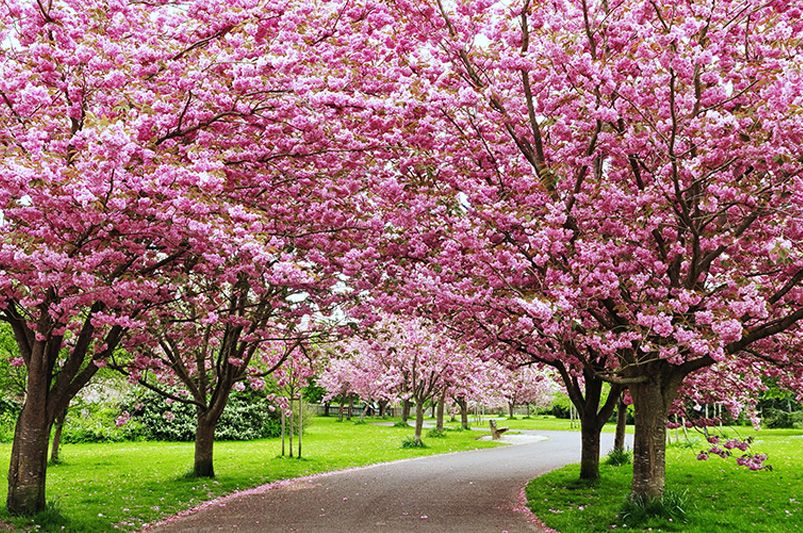
2. Cherry Trees
Cherry blossom trees are easily recognizable by their stunning floral displays of small, usually light pink flowers that cover the branches in early spring. Here are some key facts about these beautiful flowering trees:
-
There are many varieties of cherry blossom trees, but the most popular are the Somei Yoshino and Yoshino cherry trees. They originate from Japan but are now grown worldwide.
-
They are very delicate flowers that only bloom for around 1-2 weeks. This fleeting bloom is highly anticipated in many cultures and has become an important spring festival tradition.
-
Some of the most famous cherry blossom festivals are held annually in Japan, Washington DC, Canada, and even Australia. People gather under the trees for hanami - flower-viewing parties - with food, drink, and entertainment.
-
These flowering trees' blooms signify renewal and the arrival of spring. In Japan they are deeply symbolic, representing the fragility and beauty of life. The flowers are considered a national treasure.
In summary, cherry tree blossoms are beautiful and culturally significant spring-blooming trees. Their fleeting floral displays are a highlight in gardens and parks across the world.
Are you looking to add a touch of elegance and beauty to your landscape? Consider the stunning Cherry Trees available at ShrubHub. With their exquisite blossoms and graceful presence, these trees can transform your outdoor space into a captivating sanctuary.
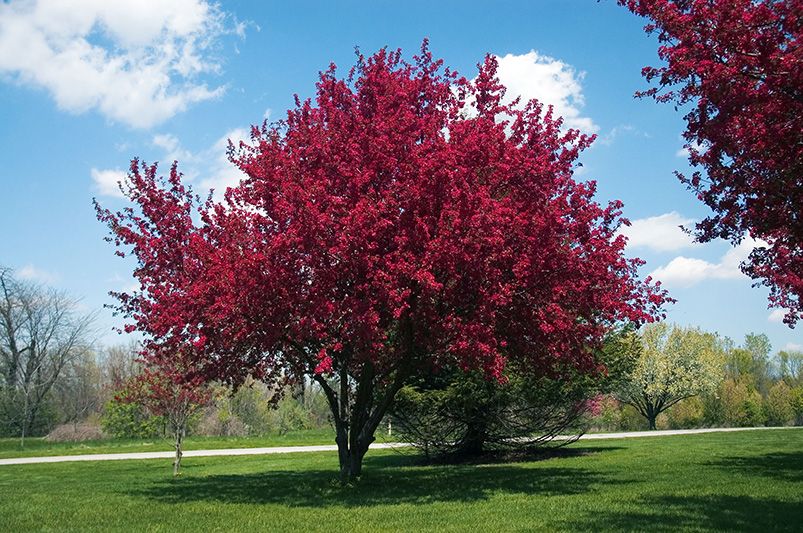
3. Crabapple
Crabapple trees are some of the most popular flowering trees, prized for their profusions of pretty spring blossoms. There are over 100 cultivated varieties of flowering crabapple or trees, ranging widely in size, flower color, and other traits. Some popular types include:
-
Red Sentinel Crabapple: A small ornamental tree growing 15-20 feet tall. It has deep pink buds opening to bright pinkish-red blossoms. The flowers give way to small bright red crabapples.
-
Royalty Crabapple: A medium-sized tree reaching 20 feet tall and wide. It has fragrant reddish-purple flowers in spring. The tree has an upright oval form.
-
Prairifire Crabapple: This crabapple grows to 20 feet high and 15 feet wide. It has deep pink flower buds opening to bright pinkish-red blossoms with white centers. The red fruit persists into winter for great year-round interest.
-
Spring Snow Crabapple: A dwarf variety growing to just 8-10 feet tall. It is blanketed in masses of fragrant, pure white flowers in spring. The flowers give way to tiny green crabapples.
Crabapple trees bring cheer and springtime delight to any landscape with their waves of colorful and fragrant blossoms. They are versatile trees that thrive in many climates and soil types. The spring flowers provide nectar for pollinators too. Crabapples plant flowering trees are iconic flowering trees for good reason.
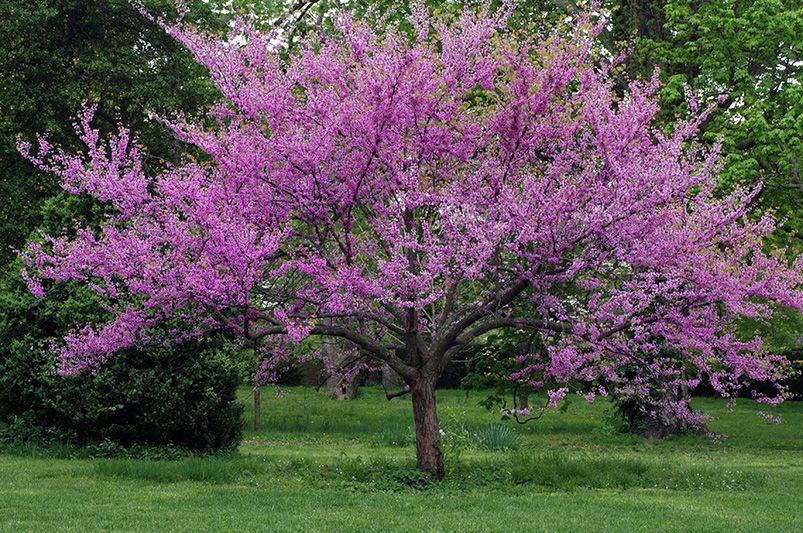
4. Redbud
The redbud tree is a spring standout, known for its vivid purple-pink blooms that cover the bare branches in early spring before the leaves emerge. Though at mature size, most redbuds reach heights of 20-30 feet tall and wide, some compact cultivars top out at 8-12 feet, making them ideal small landscape trees.
Uses in Landscaping
Graceful and delicate in appearance, redbuds make excellent specimens of small shade trees. Their dense branching structure provides dappled shade underneath. they look beautiful grouped or planted in mixed borders and cottage gardens. They can also be espaliered against walls. Prune immediately after flowering to shape and train young trees.
Compact cultivars like 'Ruby Falls' work well in containers or small city gardens. The cascading purple blooms create a focal point on patios and entryways. Plant redbuds near sitting areas or footpaths so the spring flowers can be admired up close. Combine with bulbs like daffodils that bloom at the same time.
Why wait? Take the first step toward transforming your landscape into a breathtaking retreat with redbud trees from ShrubHub. Visit our website today to explore our wide selection and start planning your dream garden. Let us help you create a landscape that will leave everyone in awe for years to come.
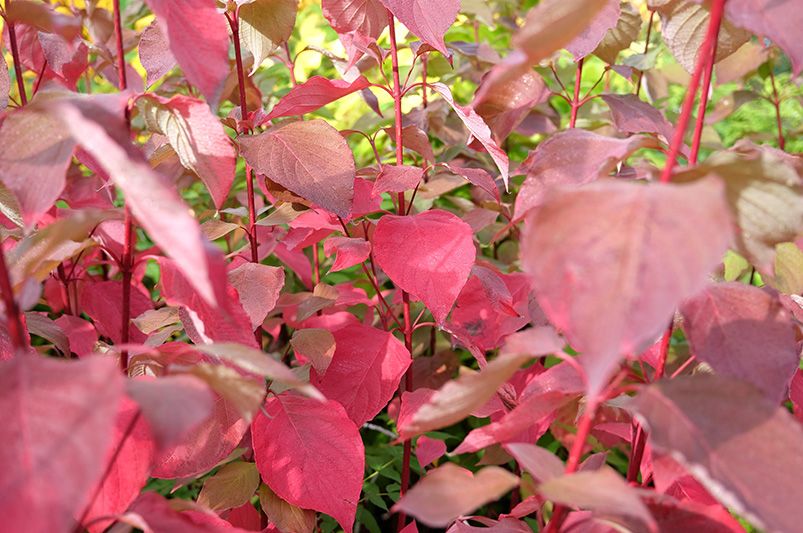
5. Dogwood
The dogwood is beloved for its showy spring blooms and year-round interest. There are over 35 species of dogwood trees and shrubs, most of which are native to North America. Some popular options include:
-
Cornelian Cherry Dogwood: Small tree with clusters of tiny yellow flowers in early spring before the leaves emerge and produces red cherry-like fruit in summer and fall. This veriety of Dogwood thrives in well-drained conditions and can be grown as a single focus plant, or with others as a hedge.
-
Kousa Dogwood: Vase-shaped flowering dogwood with delicate white bracts in late spring. Foliage turns red-purple in fall. Kousa Dogwood is popular for landscaping due to its attractive foliage and flowers, as well as its resilience to pest and disease issues.
-
White Flowering Dogwood: This dogwood veriety is a beautiful ornamental tree that grows up to 25 feet tall and has a roundish shape with branches that spread up to 30 feet wide. During springtime, it produces showy, white blossoms that work well for attracting pollinators. The White Flowering Dogwood produces lush dark green leaves that turn a deep red in the fall and prefers rich, well-drained soil and partial shade, which makes it a popular tree for landscaping.
-
Chinese Dogwood: Small tree with clusters of creamy white flowers in spring with foliage that turns red-purple in fall. Berries mature to blue-black. The Chinese Dogwood has a slow growth rate and prefers a sunny location though can handle some shade. It flourishes in well-drained, acidic soil, with moderate moisture. Avoid planting this Dogwood veriety where the soil gets waterlogged for long periods of time.
-
Bailey Red Twigged Dogwood: Bailey Red Twigged Dogwood (Cornus sericea 'Baileyi') is a deciduous shrub that is popular for its vibrant red stems, which provide winter interest in the landscape. It typically grows to a height and width of 6-8 feet and has green leaves that turn red in the fall. It prefers moist, well-drained soil and full sun to partial shade. It is commonly used in mixed borders, as a screen, or as a specimen plant.
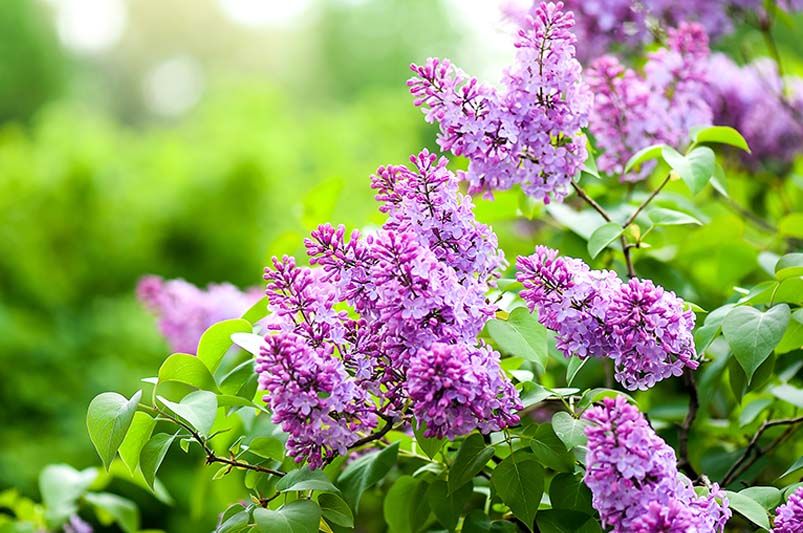
6. Lilac
One of the most beloved flowering trees, lilacs is known for its incredibly fragrant blooms in the spring. There are over 2,000 cultivars of lilacs to choose from, in colors ranging from classic lavender to white, deep purple, and more. Some popular varieties include:
-
Common White Lilac: The Common White Lilac, or Syringa vulgaris var. alba, is a popular ornamental shrub that belongs to the olive family. It can reach heights of up to 8 feet and produces fragrant, white flowers in the spring. This cultivar is easy to care for and can thrive in a variety of soil types and settings. Its versatility and beauty make it a beloved addition to gardens and landscapes worldwide.
-
Dwarf Korean Lilac: Dwarf Korean Lilac (Syringa meyeri 'Palibin') is a popular shrub that offers excellent ornamental value to any garden. This deciduous shrub is known for its compact size, reaching only 4-7 feet tall and wide, making it an excellent choice for small gardens and container plantings. It produces abundant clusters of fragrant, pale pink to lavender flowers in spring, which are adored by pollinators. Its dark green foliage turns yellow in the fall, adding a touch of autumn color to the landscape and is drought tolerant.
-
Purple Glory Lilac: The Purple Glory Lilac is a popular choice among gardeners due to its stunning purple blooms that emerge in early spring. This hybrid lilac cultivar is a cross between the Chinese lilac and the French lilac, resulting in a plant that is both hardy and adaptable to a wide range of growing conditions. Its fragrance makes it a favorite among those who crave the sweet scent of lilacs in their gardens.
-
Miss Kim Lilac: Miss Kim Lilac is a popular ornamental shrub known for its beautiful, fragrant blooms. It features small, lavender-pink flowers that bloom in late spring to early summer and has a compact, rounded shape that makes it ideal for small gardens or as a border plant. Foliage turns from green to purple in the fall, adding extra interest to the landscape. Miss Kim Lilac is easy to care for and is drought-tolerant once established.
Uses in Landscaping
Lilac flowering trees bring a touch of elegance and beauty to any landscape, making them a popular choice of ornamental trees for garden enthusiasts. Here are a few uses of lilac flowering trees that Shrubhub recommends in landscape design:
-
Focal Point: With their stunning and fragrant blossoms, lilac trees make for an excellent focal point in any landscape. Placing them strategically in the garden draws attention and adds a charming aesthetic to the overall design.
-
Privacy Screen: The dense foliage of lilac flowering trees provides an effective privacy screen, making them ideal for creating secluded areas in your outdoor space. Use them as a natural barrier to enhance privacy without compromising on beauty.
-
Color and Texture: Lilacs come in a variety of colors, including shades of purple, pink, and white. Their vibrant blooms and textured leaves add visual interest and depth to any garden landscape. They can be used to create color schemes, add contrast, or complement other plants in the vicinity.
-
Attracting Wildlife: Lilac flowering trees are not only visually appealing but also attract various pollinators, such as bees and butterflies. Bees are especially drawn to the nectar-rich blossoms, serving as a valuable source of food for these beneficial insects. Incorporating lilac trees into your landscape can help support local ecosystems and encourage biodiversity.
-
Scented Garden: The fragrance emitted by lilac trees is renowned for its sweet and intoxicating aroma. Planting them near sitting areas or walkways allows you to fully immerse yourself in their enchanting scent, creating a sensory experience in your garden.
-
Seasonal Interest: Lilac flowering trees are known for their springtime blooms, injecting bursts of color into the landscape after the winter months. The vibrant display of lilac blossoms can help transition your garden from one season to the next, infusing it with life and vitality.
Lilacs are incredibly versatile when it comes to design. Their lush foliage and colorful blooms can be integrated into a variety of landscaping styles, from classic to modern. Whether you're aiming for a vibrant burst of color or a subtle backdrop for other floral arrangements, lilacs can be tailored to suit your unique preferences and complement the overall aesthetic of your outdoor space.
At ShrubHub, we are passionate about helping you design your dream yard. We offer a wide selection of lilac varieties, allowing you to choose the perfect shrubs for your landscaping project. Our team of experts is dedicated to providing personalized guidance and assistance, ensuring that your lilacs thrive and flourish in your yard.
7. Jacaranda
The jacaranda tree provides stunning pops of color with its showy purple blooms. Native to tropical and subtropical regions, the jacaranda brings an exotic, tropical look to any landscape. The vibrant purple flowers appear in spring and early summer, literally blanketing the green foliage in an eye-catching color. The contrast between the bright purple blooms and green leaves is striking. The trumpet-shaped flowers add vibrant texture against the fern-like leaves. Once established, mature jacaranda trees put on an amazing floral display year after year. The purple blooms seem to glow against the bright blue sky, with fallen petals carpeting the ground beneath in purple confetti. The jacaranda's tropical appeal makes it a standout choice for warm climates. Plant a jacaranda tree to bring the look and feel of the tropics to your backyard.
8. Crepe Myrtle
Crepe myrtles are a standout choice for beautiful, low-maintenance flowering trees. Their cascading blooms last nearly the entire summer, providing a spectacular show of color. Crepe myrtles come in tree and shrub sizes ranging from small flowering trees to dwarf varieties under 3 feet to towering trees over 30 feet tall. With so many sizes, there is likely a crepe myrtle perfect for your landscape design.
The flowers emerge in summer with frilly, crepe-paper-like petals that come in shades of pink, red, purple, and white. Some varieties of crape myrtles like Natchez White and Muskogee Lavender also have amazing peeling bark for winter interest. Crepe myrtles thrive in hot climates and are drought-tolerant once established. Pruning and deadheading will encourage more blooms. For the best floral display, choose a full-sun location. Crepe myrtles are sure to light up your landscape with their long summer blooming period.
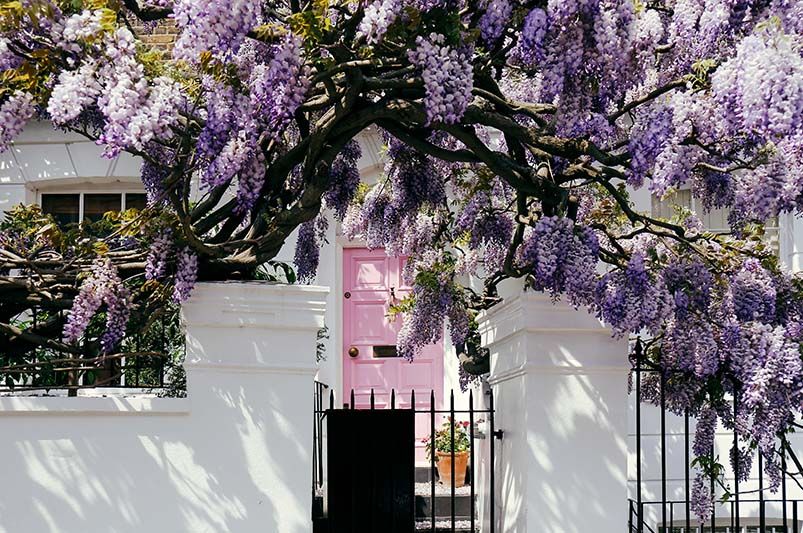
9. Wisteria
Wisteria is a stunning deciduous flowering vine known for its gorgeous, fragrant blooms that hang in foot-long clusters. Native to China, Korea, and Japan, wisteria was brought to the United States for ornamental use in the 1800s. While it can be challenging to grow and train initially, a well-cared-for wisteria vine will reward you with abundant cascades of purple, blue, white, or pink flowers in spring and early summer.
It may take 3-5 years for a young wisteria plant to start flowering, but the wait is worth it for the romantic, fragrant waterfalls of blooms that emerge! The lush green foliage also adds lovely texture and color to any landscape. It makes a stunning statement piece for gardens, patios, and front porches. Just be sure to give it proper structural support so the fast-growing vines don't overwhelm nearby plants or buildings. The cascading purple blooms will perfume the air and provide a beautiful focal point in your spring landscape.
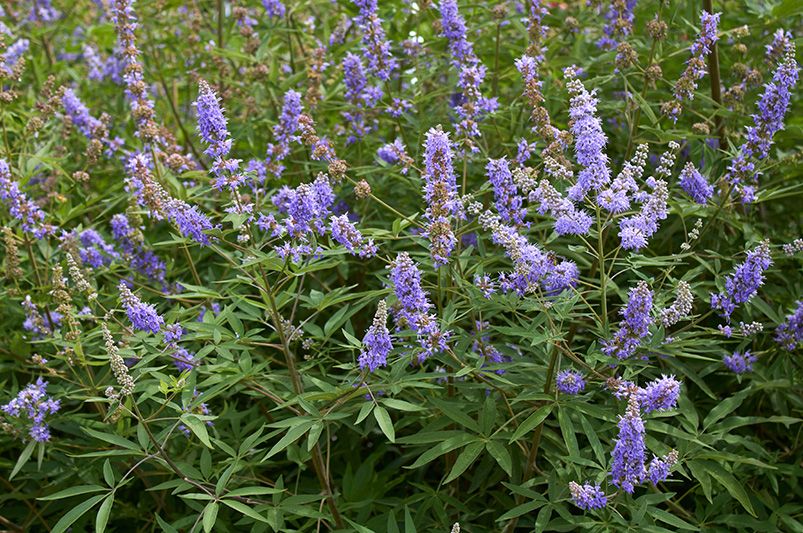
10. Chaste Tree
Chaste Tree, also known as Vitex agnus-castus, is a plant commonly used in herbal medicine for a variety of conditions. It is believed to help regulate hormone levels, particularly in women, and has been used to treat symptoms of PMS, menopause, and infertility. Chaste Tree is also said to have anti-inflammatory and antidepressant properties. It can be taken as a supplement or brewed as a tea.
Creating a Colorful Haven: Enhancing Your Landscape with Flowering Trees
These top 10 flowering trees are sure to illuminate your landscape and bring a burst of color and beauty to your outdoor space. Whether you are looking for a show-stopping centerpiece, a fragrant addition, or a tree that attracts pollinators, there is a blooming beauty on this list for you. From the delicate blossoms of the Cherry Blossom tree to the vibrant flowers of the Magnolia, each tree offers its unique charm and allure. Ready to transform your yard into a beautiful oasis? Look no further than ShrubHub, the #1 rated yard design service. With ShrubHub, you'll come home to your dream space every day Visit ShrubHub now to learn more and book their landscaping services.
Don't wait, let ShrubHub help you create the yard of your dreams today!


